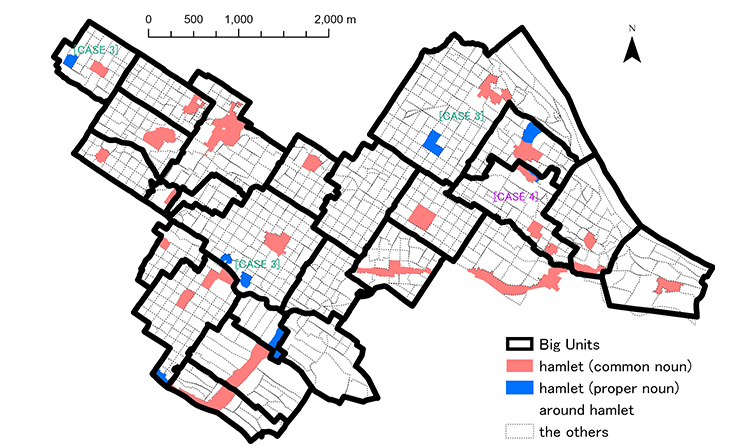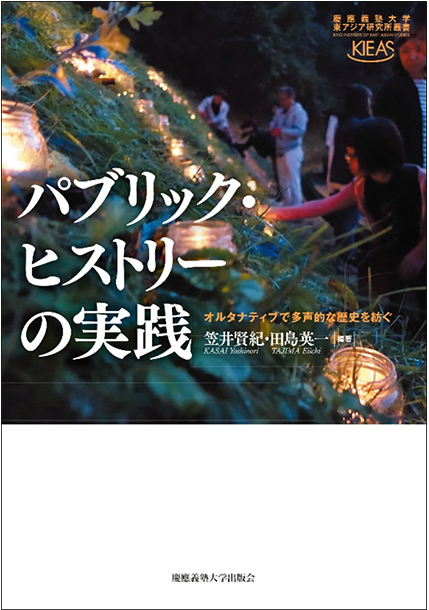Research outcomes of the Program for the Advancement of Next Generation Research Projects
Faculty of Law
Yoshinori Kasai
Introduction
How do people build and sustain the communities they live in? This fundamental question lies at the heart of my research, which focuses on local communities in Japan. Drawing on qualitative social research methodsーparticularly biographical interviews, or the life history methodーI aim to understand the lived experiences and practices that shape community life.
While biographical interviews offer a rich lens through which to explore both individual experiences and their broader social contexts, no single method can capture the full complexity of local communities. In this report, I introduce several methodological experiments I have undertaken to deepen our understanding of community life from multiple perspectives.
Biographical Interview Focusing on Housing Memories
One area of focus has been housing as a lens through which to deepen biographical interviews. A non-profit organisation called Kurasumu Shiga, where I serve as a board member, began applying this method with local residents to explore how housing shapes memory and daily life. At the same time, a research group led by Professor Kiwamu Yanagisawa at Kyoto University independently developed a similar approach (Yanagisawa, 2021), focusing on interviews about housing experiences. In collaboration, we organised a joint workshop that brought together students from various universities to exchange insights. These diverse accounts of housing changes across generations help reveal the everyday realities embedded in different local communities.
Text-mining of Biographical Interview Transcripts and Related Documents
To analyse long-term community experiences more systematically, I applied a four-stage methodology introduced in Big Qual, combining qualitative depth with computational text-mining techniques. The case study focused on a "new town" in Shiga Prefecture and examined two main sources: life history interviews and decades of community newsletters. This mixed-methods approach was presented at the RC38 session of the International Sociological Association in Budapest. While the use of text-mining helped reveal patterns and generational shifts in community engagement, it also raised important questions about nuance and interpretationーespecially in bridging personal narratives with broader social trends.
| [A] Life Histories | [B] Newsletters of Neighbourhood Associations | |
| 1. Aerial Survey | Conducted 23 interviews with long-term residents. | Analysed 43 years, 674 issues, 9.7K articles, and 1.32M characters. |
| 2. Geophysical Surveying | Used computer-aided text-mining to identify co-occurrence structures in the text data. | |
| 3. Test Pit Sampling | Identified which interview patterns to explore further. | Determined which text structures warrant deeper analysis. |
| 4. Deep Excavation | Conducted in-depth qualitative analysis of selected interviews. | Conducted qualitative depth reading of key text structures from newsletters.. |
Table 1:
Four-stage analysis (see Big Qual) for two data souces
At the same time, the project highlighted the potential of mixed methods not only to validate findings across different types of data, but also to expose the disconnects between how individuals articulate their own experiences and how those experiences appear in aggregated forms. For instance, while many elderly participants believed their past careers were unrelated to their community roles, the textual data suggested a continuity in how they approached coordination and social engagement. This layered approach allowed me to examine how different forms of dataーoral, documentary, and statisticalーcan reinforce or contradict each other, ultimately deepening our understanding of how communities function over time.
Historic Map Analysis and Micro-Toponyms
To complement life history interviews, I analysed early Meiji-period cadastral maps (Chiken Torishirabe Sōezu) from the Ritto City History and Folklore Museum. These maps, created during land title reforms, reflect how communities were spatially perceived and governed in the 1870s. Using GIS, I visualised distortions in the maps and found that central residential areas were drawn more accurately than peripheral zones such as forests or fields, revealing implicit spatial hierarchies not often captured in oral accounts.

Figure 1:
Analysis of Distribution of Small Place Names
I also examined historical koaza place names, which reflect how local people once perceived, named, and organised their everyday space. This structural and spatial approach enriches our understanding of community formation beyond what can be accessed through narrative alone.
Doing Public History
In addition to interviews and spatial analysis, I explore how long-standing community practicesーincluding folk customsーcan serve as methodological windows into how people build and sustain human connections. Drawing on the field of public history, I take interest not only in official or academic narratives, but also in the plural, everyday histories shared and shaped by community members.

Figure 2:
Book Cover of A Co-edited Book on Public History
Folk events such as the Sagicho fire ritual and Ise-ko pilgrimage association, both observed in my primary field site in Shiga Prefecture, are not simply remnants of the past. Rather, they function as what I call "repertoires of symbiosis"ーshared social practices that enable coexistence despite generational or ideological differences. Through collaborative fieldwork and archival research, I examine how these repertoires foster intergenerational memory, distribute responsibility, and embed shared enjoyment and obligations into everyday life.
This approach extends the notion of qualitative research by recognising that communities themselves preserve methodsーpractical repertoiresーfor managing diversity and sustaining relationships. By studying these repertoires, researchers can identify and support locally grounded strategies for coexistence across generations and social differences.
Conclusion
Understanding local communities requires more than just listening to individual voices; it demands a careful layering of methods, sources, and perspectives. In this report, I have introduced several approachesーfrom biographical interviews and text-mining to spatial analysis and the study of folk practicesーthat together offer a fuller picture of how people live together, remember together, and negotiate difference. These methods are not simply tools; they are part of an ongoing conversation between researchers and communities. As I continue this work, I aim to refine these approaches further, engaging in collaborative research that is both rigorous and responsive to the lived realities of those whose stories and spaces I study.
Acknowledgements
This work was supported by the Program for the Advancement of Next Generation Research Projects at Keio University, by JSPS KAKENHI Grant Numbers JP20K02093, JP21H05339, JP21H03722, JP23H01583, and JP23H03895, and by the Ritsumeikan University Art Research Center ARC-iJAC International Joint Research Program (Individual Project Scheme).
Related Presentations
- Kasai, Y. (2024). Sagicho Fire Festival and Ise Pilgrimage Lecture Groups Observed in Roadside Villages in Ritto City. Public Lecture, Department of History, Rikkyo University. [in Japanese]
- Kasai, Y. (2024). Children and Daily Lives in a Depopulating Society: Inheritance, Intergenerational Exchange, and Mutual Growth. Symposium, Japan Society of Life Studies. [in Japanese]
- Kasai, Y., Takeyama, K., & Kimura, S. (2024). "Sedimented Histories" and the Decentralized Life History Museum Concept. 51st Annual Conference, Japan Society of Life Studies. [in Japanese]
- Kasai, Y. (2024). Half a Century in a 'New' Town: Biographies of Residents and Neighborhood Associations. RC38 Conference, International Sociological Association, Budapest, Hungary.
- Kasai, Y. (2024). Human Connections in Traditional Hamlet and a New Town in Japan: Life Histories, Folklore, and Public History. Guest Lecture, National Chengchi University, Taiwan.
- Kasai, Y. (2024). Trends in Public History in Japan. Public History Forum, Taiwan Association of Public History, Taipei City University.
- Kasai, Y. (2024). The Social Functions of Koshōgatsu (Little New Year) Folk Customs in Japan. 8th International Conference, East Asian Conference on Japanese Studies. [in Japanese]
Related Publications
- Kasai, Y. and Tajima, E. (eds.) (2025). Practicing Public History: Weaving Alternative and Polyphonic Histories. Tokyo: Keio University Press. [in Japanese]
- Kasai, Y. (2025). Distortions in the General Map of Land Title Surveys and Micro-Toponyms: Based on an Analysis of Maps Held by the Ritto History and Folklore Museum. In Ushio, H. (ed.), Modern Legal Conceptions of Land and Space: Toward Sustainable Resource Management, Chapter 10, pp. 248-283. Tokyo: Nihon Hyoron Sha. [in Japanese]
- Kasai, Y. (2025). Repertoires for Living Better Together. In Tsukiura, T., Shibata, Y., & Kaneko, M. (eds.), Lifelong Learning for Everyone: An Invitation to the Science of Enjoying Life, Chapter 16, pp. 149-157. Kyoto: Nakanishiya Publishing. [in Japanese]
- Kasai, Y. (2025). Sagicho Fire Festival and Ise Pilgrimage Lecture Groups Observed in Roadside Villages in Ritto City. Shien, 85(2), pp. 101-114. [in Japanese]
References
- Weller, S., Edwards, R., Phoenix, A., Smart, C. and James, A. (2023). Big Qual: Big Data, Thick Data, and the Mixed Methods Revolution. Cham: Palgrave Macmillan.
- Yanagisawa, K. (2021). Jū keiken intabyū no susume: Hito to sumai [Housing Experience Interviews: People and Housing]. Kyoto: Hōmu Sōken.
Keio University Program for the Advancement of Next Generation Research Projects
The Keio University Program for the Advancement of Next Generation Research Projects subsidizes research costs with the aim of finding solutions to challenges and of promoting global academic research in order to allow Keio University faculty members to establish a presence as core researchers.